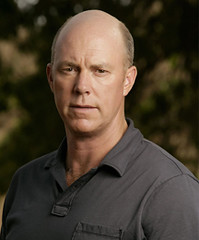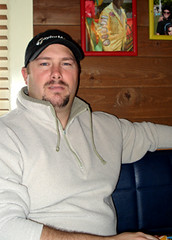The quality of leadership, more than any other single factor, determines the success or failure of an organization. — Fred Fiedler and Martin Chemers
All across the net — in forums, social networks, fan bases, and even well-read blogs — some people are elevated up by any number of measures and any number of reasons to become perceived leaders in their respective communities or industries.
And yet, unfortunately, when the concept of being a leader arises, whether sought after or rejected on its face, few realize it is not leaders that these varied communities and industries crave. It is leadership.
In June, a few fans, in consideration of my suggestions to promote fandom asked me how to organize a fan club. I obliged them, but was surprised by the response of some, who rejected the idea on its face because Jericho fans did not want any leaders. Off with any leaders’ heads, some said, we are all equal here.
What was missed is that I was not advocating for leaders as they defined the term as much as I was advocating leadership. The two are vastly different.
Leadership is not defined by power, privilege, rank, title, position, or authority. Leadership is a quality of action, one that rarely requires force of law, threat, manipulation, control, or the attempted shutdown of dissent. On the contrary, leaders welcome all parties, all views, and then effectively match those to organizational goals and not necessarily their opinions or preferences.
A successful leader transcends their personality in order to ensure any following is aligned to the organizational goals and not themselves as individuals. The very best of them continually challenge any followers to reach higher obtainable goals, encouraging them to apply leadership as well.
In social media, some bloggers, social network participants, forum administrators, group hosts, and even online talk show hosts become leaders either by pursuit of action, grant of title, or by default simply because others recognize them for their insights and expertise. Yet, relatively few recognize the role they have assumed or accept the responsibility of it. Fewer still have ever been exposed to the difference between leaders and those who think they are leaders.
You can tell which are which. Effective leadership looks for objectivity and truth, taking responsibility for their actions and win the hearts of any following. Whereas those who think they are leaders are subjective, obscure facts, and promote their own partisan interests and make demands while denying the role for fear of being held responsible or accountable. Sometimes, they attempt to force others to succumb to their will because of any number of erroneous qualifications: experience, seniority, title, rank, traffic, followers, friends, links, etc.
Leadership requires none of these things. Rather, it revolves around vision, motivation, inspiration, empowerment, and authenticity. And very likely, but not certainly, it seems to me that Jericho fans are well overdue to find those few who are capable.
If not, the craving for leadership will continually lead toward elevating those who are popular and not necessarily those who have the skill sets necessary. The results can be disastrous, as they have been for the last two weeks.
You see, there is a vast difference between those who start something, provide a forum to talk about something, and those who lead something. Last week, someone responded to me and said he did not want to be a leader. It reminded me of an episode in Jericho, when Gray Anderson was ready, once again, to relinquish authority to Johnston Green. Green basically told him to accept the responsibility or stand aside.
The lesson was as clear in the show as it is for fans today. As I opened, the quality of leadership, more than any other single factor, will determine the success or failure of a third season. Good night and good luck.

All across the net — in forums, social networks, fan bases, and even well-read blogs — some people are elevated up by any number of measures and any number of reasons to become perceived leaders in their respective communities or industries.
And yet, unfortunately, when the concept of being a leader arises, whether sought after or rejected on its face, few realize it is not leaders that these varied communities and industries crave. It is leadership.
In June, a few fans, in consideration of my suggestions to promote fandom asked me how to organize a fan club. I obliged them, but was surprised by the response of some, who rejected the idea on its face because Jericho fans did not want any leaders. Off with any leaders’ heads, some said, we are all equal here.
What was missed is that I was not advocating for leaders as they defined the term as much as I was advocating leadership. The two are vastly different.
Leadership is not defined by power, privilege, rank, title, position, or authority. Leadership is a quality of action, one that rarely requires force of law, threat, manipulation, control, or the attempted shutdown of dissent. On the contrary, leaders welcome all parties, all views, and then effectively match those to organizational goals and not necessarily their opinions or preferences.
A successful leader transcends their personality in order to ensure any following is aligned to the organizational goals and not themselves as individuals. The very best of them continually challenge any followers to reach higher obtainable goals, encouraging them to apply leadership as well.
In social media, some bloggers, social network participants, forum administrators, group hosts, and even online talk show hosts become leaders either by pursuit of action, grant of title, or by default simply because others recognize them for their insights and expertise. Yet, relatively few recognize the role they have assumed or accept the responsibility of it. Fewer still have ever been exposed to the difference between leaders and those who think they are leaders.
You can tell which are which. Effective leadership looks for objectivity and truth, taking responsibility for their actions and win the hearts of any following. Whereas those who think they are leaders are subjective, obscure facts, and promote their own partisan interests and make demands while denying the role for fear of being held responsible or accountable. Sometimes, they attempt to force others to succumb to their will because of any number of erroneous qualifications: experience, seniority, title, rank, traffic, followers, friends, links, etc.
Leadership requires none of these things. Rather, it revolves around vision, motivation, inspiration, empowerment, and authenticity. And very likely, but not certainly, it seems to me that Jericho fans are well overdue to find those few who are capable.
If not, the craving for leadership will continually lead toward elevating those who are popular and not necessarily those who have the skill sets necessary. The results can be disastrous, as they have been for the last two weeks.
You see, there is a vast difference between those who start something, provide a forum to talk about something, and those who lead something. Last week, someone responded to me and said he did not want to be a leader. It reminded me of an episode in Jericho, when Gray Anderson was ready, once again, to relinquish authority to Johnston Green. Green basically told him to accept the responsibility or stand aside.
The lesson was as clear in the show as it is for fans today. As I opened, the quality of leadership, more than any other single factor, will determine the success or failure of a third season. Good night and good luck.





















